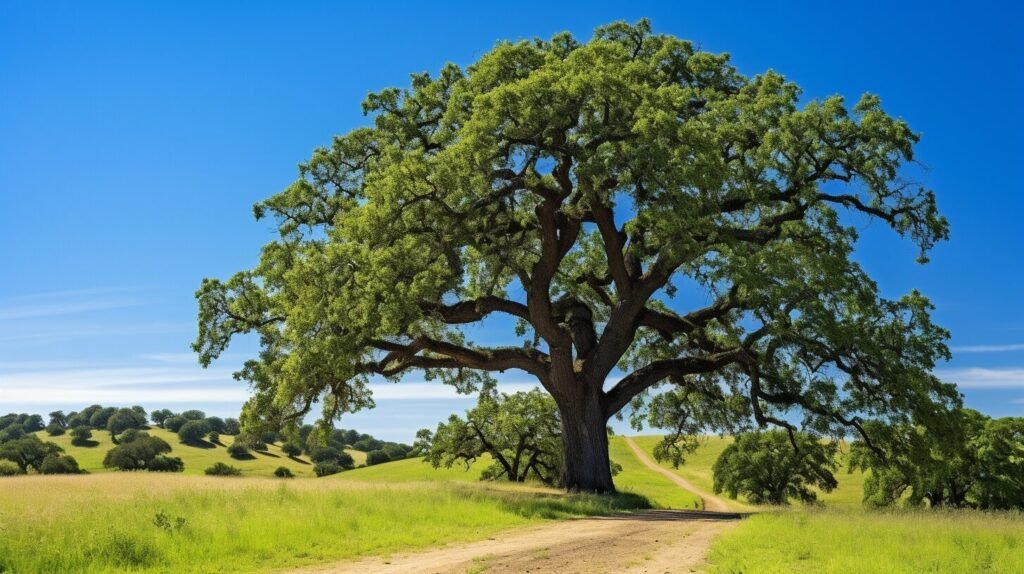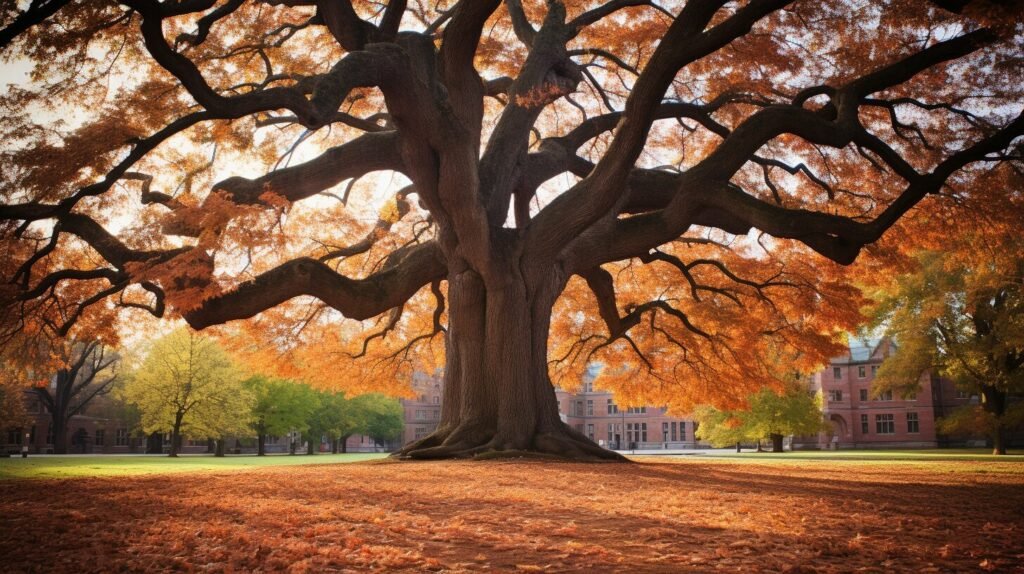Table of Contents
- The Legacy of the Charter Oak in Connecticut’s History
- The Journey to Preserve the Charter Oak
- The Charter Oak in Connecticut’s Collective Memory
- The Symbolic Figures Behind the Charter Oak
- The Journey of the Charter Oak – From King Charles II to Connecticut’s State Tree
- FAQ
- What is the significance of the Charter Oak as the official state tree of Connecticut?
- What events are associated with the Charter Oak in Connecticut’s history?
- What is the symbolism and cultural significance of the Charter Oak?
- How has the Charter Oak been preserved over the years?
- How is the Charter Oak remembered in Connecticut’s collective memory?
- Who were the symbolic figures associated with the Charter Oak?
- What is the journey of the Charter Oak from King Charles II to becoming Connecticut’s state tree?
Connecticut, one of the original thirteen colonies, boasts a rich history and a unique culture. Among the state’s many symbols lies the official state tree – the Charter Oak. This majestic oak has been a part of Connecticut’s legacy since 1856, encapsulating the state’s spirit of determination and resistance to tyranny.
The events surrounding the Charter Oak’s connection to the state’s royal charter date back to 1662. King Charles II, in an effort to maintain peace with the colonies, granted the charter that laid the foundation for Connecticut’s unique government. However, the charter became a target of James II, who sought to consolidate power and ignored the colony’s self-rule. It was on August 21, 1687, that the treasured charter was hidden in the hollow of the Charter Oak to prevent its seizure by Sir Edmund Andros, the representative of King James II.
The Charter Oak’s legacy is evident not only in its status as the official Connecticut state tree but also in its depiction on the Connecticut State Quarter. This majestic oak has become one of the state’s most colorful and significant symbols, representing Connecticut’s spiritual strength, love of freedom, and the inspiration it provides to our colonial forebears.
- The Charter Oak is the official state tree of Connecticut.
- The treasured royal charter was hidden in the hollow of the Charter Oak in 1687 to prevent its seizure by Sir Edmund Andros.
- The Charter Oak’s symbolic significance represents Connecticut’s spiritual strength, love of freedom, and inspiration to colonial forebears.
- The Charter Oak is depicted on the Connecticut State Quarter.
- The Charter Oak has been a part of Connecticut’s legacy since 1856.
The Legacy of the Charter Oak in Connecticut’s History
In 1687, Connecticut leaders faced a crisis. Sir Edmund Andros, the representative of King James II, had arrived in Connecticut with orders to seize the treasured royal charter.
The charter, which had been granted by King Charles II in 1662, was a symbol of Connecticut’s unique status as a self-governing colony. Its seizure would have meant the loss of the colony’s cherished freedoms.
But Connecticut’s leaders were determined to resist. They knew that taking direct action would lead to a violent confrontation with Andros and his soldiers. Instead, they turned to a plan that was both bold and risky.
On August 21, 1687, Captain Joseph Wadsworth led a group of men to the statehouse in Hartford, where the charter was kept. Under the cover of darkness, they removed the charter and hid it in the hollow of the majestic oak tree, which came to be known as the Charter Oak.
This act of defiance was a critical moment in Connecticut’s history. It demonstrated the determination of its leaders, such as Governor John Winthrop, to protect the colony’s freedoms at all costs. And it helped to inspire future generations of Americans to fight for their own rights and liberties.
Despite Andros’ efforts to retrieve the charter, it remained hidden in the Charter Oak until the Glorious Revolution in England in 1688. With the ascension of William and Mary to the throne, Connecticut’s leaders were able to retrieve the charter and restore their colony’s status as a self-governing entity.
The Charter Oak remains a symbol of Connecticut’s rich history and enduring spirit of resistance to tyranny.

The Charter Oak is more than just the official state tree of Connecticut; it is a symbol of the state’s spiritual strength and love of freedom. The Connecticut State Quarter bears the image of the Charter Oak, and it is recognized as one of the most colorful and significant symbols of the state.
Designated as the official Connecticut state tree in 1947, the Charter Oak is revered by the Connecticut Tree Protective Association for its historical and cultural significance. It represents the inspired determination of our colonial forebears to resist tyranny and preserve their individual liberties.
The Charter Oak is a reminder that spiritual fortitude and steadfastness can overcome formidable obstacles. It has inspired generations of Connecticuters to stand up for their rights and never give up in the face of adversity.

The image of the majestic Charter Oak on the Connecticut State Quarter is a testament to its enduring legacy. The tree is not just a part of Connecticut’s past, but a living symbol of its present and future. Its depiction on the quarter serves as a daily reminder of the state’s role in shaping our nation’s history.
The Charter Oak is more than just a tree; it is a powerful symbol of determination and courage. It reminds us of how far we have come as a nation and how much more we still have to accomplish. It is a part of our heritage that we must preserve for future generations to come.
The Journey to Preserve the Charter Oak
After the historic events of August 21, 1687, when Captain Joseph Wadsworth and other Connecticut leaders hid the charter in the hollow of the majestic Charter Oak to prevent its seizure by Sir Edmund Andros, the representative of King James II, the General Court of Connecticut formally received the charter and ensured that it remained safe and protected.
The Charter Oak, which stood on the Wyllys Estate, remained a symbol of Connecticut’s defiance against tyranny. In recognition of its historical significance, the Charter Oak was designated as the official state tree of Connecticut in 1856. Today, the majestic oak remains a treasured symbol of the state, and its depiction can be seen on the Connecticut State Quarter.

The General Statutes of Connecticut recognize the Charter Oak as a symbol of the state’s determination and resistance against tyranny. Efforts have been made to ensure the preservation of the tree, and the Connecticut Tree Protective Association has backed its protection.
The journey to preserve the Charter Oak has been a long and challenging one, but its enduring legacy and cultural significance have ensured its place in Connecticut’s history and collective memory.
The Charter Oak in Connecticut’s Collective Memory
As Connecticut’s official state tree, the Charter Oak has become an iconic symbol of the state’s history and values. Its significance is reflected in its representation in the Connecticut Historical Society, which safeguards artifacts and documents that chronicle the state’s past.
The Charter Oak also has the backing of the Connecticut Tree Protective Association, which promotes conservation efforts aimed at preserving the state’s natural beauty. Members of the state forest hold the majestic oak in great reverence, recognizing its role in shaping Connecticut’s identity and heritage.
It is worth noting that the Charter Oak was already old when it played its pivotal role in Connecticut’s history. The tree hid the state’s treasured charter in its hollow trunk for safekeeping, marking a moment of courage and determination that has earned it a place in the state’s collective memory.

The legacy of the Charter Oak lives on, inspiring future generations to honor the state’s history and values. Its remarkable journey from being a pivotal symbol during King Charles II’s reign to becoming the beloved Connecticut State Tree is a testament to the spirit of determination and resistance to tyranny.
The Symbolic Figures Behind the Charter Oak
Behind every significant historical event, there are figures who embody the spirit of the era, and the Charter Oak story is no different. While the majestic oak tree symbolizes the enduring strength of Connecticut’s spirit, the person who courageously hid the royal charter in a candle-lit room adds a human dimension to the event.
That person was Captain Joseph Wadsworth, a colonial hero who went to great lengths to protect the cherished charter. With Sir Edmund Andros, the representative of King James II, determined to seize the document, Wadsworth knew he had to act quickly and decisively. He managed to sneak into the candle-lit room where the charter was kept, remove it from its protective case, and slip it under his cloak, making his way to the majestic oak tree under the cover of darkness.
The backdrop to this thrilling episode was the failure of various strategies employed by Connecticut’s leaders to prevent the seizure of the charter. But Wadsworth’s determined courage and resourcefulness marked one of the greatest episodes in Connecticut’s history, one that continues to inspire us today.

The Journey of the Charter Oak – From King Charles II to Connecticut’s State Tree
In tracing the journey of the Charter Oak from King Charles II’s reign to its status as Connecticut’s official state tree, we see a fascinating story of suave diplomacy and the failure of various strategies to seize the treasured charter.
Under King Charles II’s reign, Connecticut’s royal charter granted the state a significant amount of autonomy. However, after the king’s death, his successor, James II, sought to centralize control and saw Connecticut as a threat to his power. In 1687, his representative, Sir Edmund Andros, arrived in Connecticut to seize the charter.
However, Governor John Winthrop employed suave diplomacy by delaying handing over the document and negotiating with Andros. When negotiations failed, Connecticut leaders, led by Captain Joseph Wadsworth, made the bold decision to hide the charter in the hollow of the majestic oak.
Despite the failure of various strategies to seize the charter, it arrived in Connecticut, marking a significant moment in the state’s history. Today, the Charter Oak serves as a symbol of determination and resistance to tyranny and remains an important part of Connecticut’s cultural heritage.
FAQ
What is the significance of the Charter Oak as the official state tree of Connecticut?
The Charter Oak holds historical significance as it is connected to the state’s royal charter and has become a symbol of Connecticut’s spirit of determination and resistance to tyranny. It represents the state’s love of freedom and serves as an inspirational reminder of our colonial forebears.
What events are associated with the Charter Oak in Connecticut’s history?
The Charter Oak is famously connected to the events of August 21, 1687, when Connecticut leaders, led by Captain Joseph Wadsworth, hid the treasured royal charter in the hollow of the majestic oak. This act was done to prevent its seizure by Sir Edmund Andros, the representative of King James II.
What is the symbolism and cultural significance of the Charter Oak?
The Charter Oak holds symbolic and cultural significance for Connecticut. Its depiction on the Connecticut State Quarter and its designation as the official state tree highlight its importance. It represents the state’s spiritual strength, love of freedom, and serves as an inspiration to our colonial forebears. The Connecticut Tree Protective Association also backs its preservation.
How has the Charter Oak been preserved over the years?
Efforts to preserve the Charter Oak have been made throughout history. The General Court of Connecticut formally received the charter and the majestic oak can be found on the Wyllys Estate. The Charter Oak’s depiction on the Connecticut State Quarter and its recognition in the General Statutes of Connecticut also contribute to its preservation.
How is the Charter Oak remembered in Connecticut’s collective memory?
The Charter Oak holds a special place in Connecticut’s collective memory. It is represented in the Connecticut Historical Society and receives support from the Connecticut Tree Protective Association. Members of the state forest hold reverence for the tree, and its age at the time it hid the charter adds to its historical significance.
Who were the symbolic figures associated with the Charter Oak?
Captain Joseph Wadsworth is a symbolic figure associated with the Charter Oak. It was he who led the hiding of the charter in the candle-lit room, making this one of the greatest episodes of determined courage in Connecticut’s history.
What is the journey of the Charter Oak from King Charles II to becoming Connecticut’s state tree?
The journey of the Charter Oak can be traced back to King Charles II’s reign and the suave diplomacy of Governor John Winthrop. Despite various strategies to seize the charter, it ultimately arrived in Connecticut and solidified its status as the official state tree, representing the state’s spirit of determination and resistance to tyranny.







